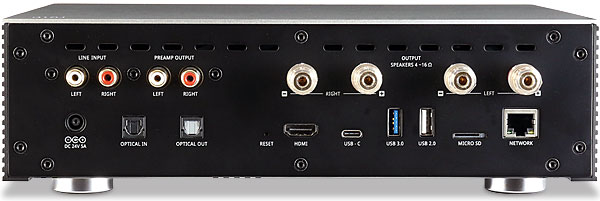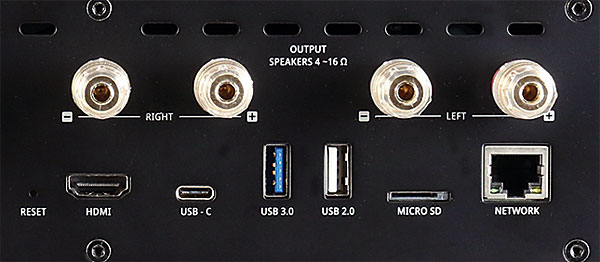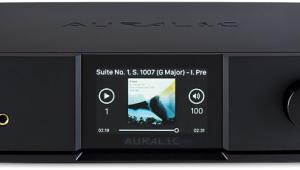HiFi Rose RS201 E Streaming DAC/Amplifier Page 2
![]() Light But Tight
Light But Tight
Despite the cautions about power output mentioned in PM's Lab report, the RS201 E proves well-equipped for the kind of set-ups in which it's likely to be used. Paired with the likes of Bowers & Wilkins' 600 S2 Anniversary Edition speakers or, indeed, the rather more expensive Neat Iota Xplorers I used for much of my listening [HFN Jul '18], it proves a willing and entertaining listen provided you don't ask too much of it.
Yes, it can toughen up a bit when pushed really hard with driving rock standards or large-scale orchestral works, but playing music at sociable – rather than anti-social – levels it sounds smooth and refined. It also has a knack of delivering excellent insight into performances and the way the music has been put together.


That's certainly the case with Sting's The Bridge [A&M 3858707; 48kHz/24-bit], which belies its 'lockdown album' status and remote recording procedures with a wonderfully slick and crafted production, in which every element seems perfectly judged. The RS201 E brings out all the character of the singer's voice and makes the most of the serried ranks of (distant) musicians, all gelling together in a sound that's suitably lush and rich, while at the same time catchy and consistently interesting. Yes, the bass is more of the 'light but tight' school rather than plumbing the depths, but it's more than adequate for this set, while the slightly soft treble will be preferred by many listeners, and won't aggravate speakers with a slightly over-enthusiastic top-end.
Similarly with the Carnegie Mellon Wind Ensemble's recently released recording of Richard Strauss's The Happy Workshop [Reference Recordings FR-745], this one-box allows a persuasive view of the skilfully intertwined instrumental timbres, while having all the speed and definition to make the most of the Mozartian influences in several of the movements. There's no need for massive bass here, so the system's light and fleet-footed approach is well-suited, and there's a good sense of the space and air of the recording venue, without overstressing things and distracting from the ensemble's intimate sound.
Rough And Tumble
Roughen things up a bit with Peat & Diesel's Uptown Fank [Wee Studio Records], where traditional Scottish folk sounds meet driving beats, and while the RS201 E sounds a little congested and thick, that's just how the set sounds on even the most revealing systems. Importantly, there's no shortage of musical communication here, whether the trio is punching hard or lulling the listener into a false sense of security with 'Stornoway's poignant opening before the guitar, bass and drums thunder in behind the fabulously raucous vocal.

The RS201 E's power plant could do with a bit more scale and authority at times, as is clear in the great final movement of the Brahms First [Budapest Festival Orchestra/Fischer, Channel Classics CCS SA 28309; DSD64], where a rather more free-breathing sense of space and sheer scale of the musical forces wouldn't go amiss. But even here there's still plenty of intrigue on offer, just as the musical threads remain easy to follow, and are delivered with excellent fluidity.
Thrills Without Spills
And when you calm down with last year's 30th anniversary release of Fourplay's eponymous album [Warner Bros 7599-26656-2], the system sounds assured and oh-so-detailed. Even with the opening 'Bali Run', which has somehow survived so many hi-fi demonstrations to emerge still able to thrill, there's detail in Nathan East's tight bass and the punchy drums of Harvey Mason, underpinning the intertwining keyboards of Bob James and Lee Ritenour's guitar.
Sure, it's a bit lush and borderline 'audiophile jazz', but the music remains beautifully crafted, and motors along smartly in the hands of the HiFi Rose RS201 E, especially when you put a bit of the little unit's refined welly behind it.
Hi-Fi News Verdict
Yes, the RS201 E has its limits, and they're not hard to find if you push this little system too hard, but keep it within its comfort zone – as most users will – and you'll find it as fine-sounding as it is as flexible and enjoyable to use. At its price level it's not exactly without competition, but it retains plenty of user-appeal, and features – notably video streaming and playback – that nothing else of its kind can match.



























































